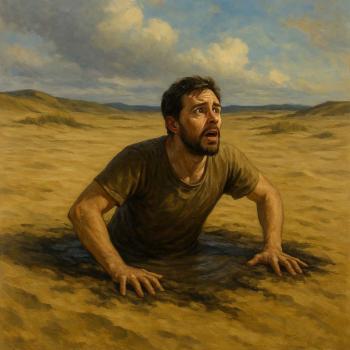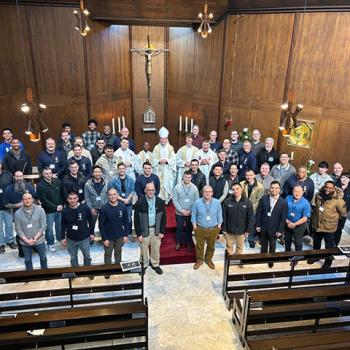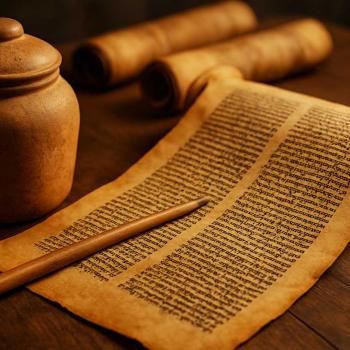Editors' Note:This article is part of the Public Square 2014 Summer Series: Conversations on Religious Trends. Read other perspectives from the Jewish community here.
This June, I drove into Syracuse, in the southeast part of Sicily, at night. My hotel was on the island of Ortygia, the historic center of the city and a well-known tourist destination. Ortygia is a warren of narrow streets and hidden courtyards, and it dates to the ancient Greek period. Along with mainland Syracuse, the city at its peak rivaled Athens in both size and power. People of different cultures and religions interacted regularly in its bustling squares and markets.
In the dark, Ortygia seemed almost mystical. The sea wall that surrounded the island felt as if it were hemming me in for some unknown and private revelation.
What I knew for certain was that I wanted to see the old Jewish quarter and the mikveh, or Jewish ritual bath, that lay underneath it. While there is no organized Jewish community today, Syracuse once had a thriving population of Jews. The greatest influx of Jews took place after the Romans destroyed the Second Temple in Jerusalem and murdered Jews or expelled them from the land of Israel. Most of the Jews who settled in Syracuse lived in their own quarter (in Ortygia), spoke their own language (Aramaic), and observed their own ritual practices.
Immersion in the mikveh was one of them. It is a ritual that I observed myself.
On my first day in Syracuse, I walked into the Jewish quarter to the hotel where the mikveh was discovered in 1993; it had been unearthed during construction on the building and opened to the public only a few years ago. The mikveh is Byzantine in style and was probably built about 1,500 years ago, making it the oldest mikveh in Europe.
As I stood in front of the hotel waiting for the tour guide to take me below ground, a group of Israeli tourists suddenly emerged and stood next to me. Since I understood Hebrew, I listened to the conversation between the guide and the group. She spoke about the history of the Jews in Syracuse, the Jewish quarter, and the mikveh that was sixty feet beneath us. A number of the Israelis looked uninterested in her words. One man asked when they were going to get to the Piazza del Duomo (a much more popular and famous site); a woman said they'd been walking all day and that she wanted to have lunch. No one seemed disappointed that they weren't going to have time to go down to the mikveh, and the group soon walked on.
Here I was, purpose-driven and excited, a North American Jew who had decided to become a rabbi, standing silently and completely disconnected from a group of other Jews, Israeli Jews, who couldn't have cared less about something that enthralled me. The ritual and sense of spirituality that inspired me had virtually nothing to do with the land (Israel) and language (Hebrew) that anchored their identities. Mine was a spiritual identity while theirs was a national one, and I felt that a great gulf separated us. I had lived in Israel for two years in my twenties and I understood the power and pull of nationality, but as I had grown older I'd come to believe that Jews needed more than language and land to thrive as a people. After all, we had lived outside of the land of Israel for two millennia and managed to keep our identities intact.
The mikveh below me was proof of that.
I climbed down the excavated steps to see the ritual bath. There were five separate immersion pools, fed by underground spring water that permeated the carved-out structures. Two of the pools were set apart from the others behind a wall, most likely reserved for rabbis or other leaders of the community. I imagined what life was like for the Jews who once gathered in this starkly beautiful place. As a rabbi myself, I pictured taking off my clothes, cleansing my body, and immersing myself in the pool. It was a profound experience that almost brought me to tears.
I thought all day about the disconnect I felt from my Israeli brothers and sisters; I'd had a deep, tribal experience, while they wanted to move on and have lunch. The divide between us points to a larger challenge. Most Jews, both in Israel and North America, do not identify their sense of Jewish identity with ritual or spirituality, but with culture. When we remove land and language from the equation, most Jews still find their points of connection through a shared narrative, history, and gastronomy. Ritual and theology play a very small role, if any, in this dynamic. Immersing in a mikveh is about as alien to their identities as celebrating the Eucharist.
The boundary between nationality and culture is, in the Jewish context, a porous one. Yet neither, in my view, will be sufficient to sustain Jewish identity into future generations. Those men and women who live in Israel and speak Hebrew will remain Jews, of course, but the "Jewishness" that they identify with and embody will be a superficial one. Similarly, those Jews who live in North America and choose to identify culturally as Jews are missing the mark. Neither approach to Jewish identity is adequate as a way of connecting with the rich and profound traditions and teachings that constitute the Jewish religion, at least as I understand it.
Despite their popularity, the problem with both the national and cultural approaches is that they produce a Jewishness without Judaism, a sense of identity based on place, biology, and sentiment. How can we achieve any semblance of Jewish continuity if we lack a foundation that links us with our past and our predecessors? Without the religious component—without the spiritual architecture that gave birth to Jewish identity in the first place—we will have created a hollow vessel, one that will not be able to transport us across the murky seas of postmodernity.
8/20/2014 4:00:00 AM




